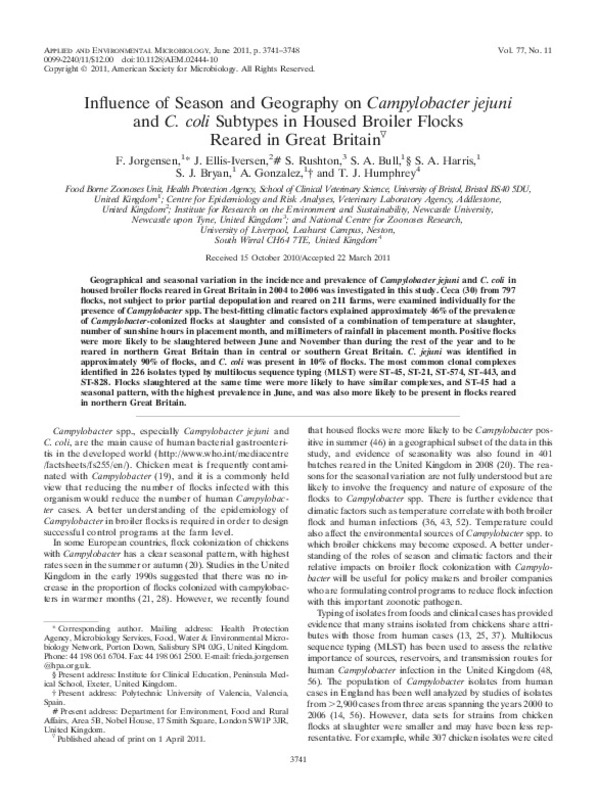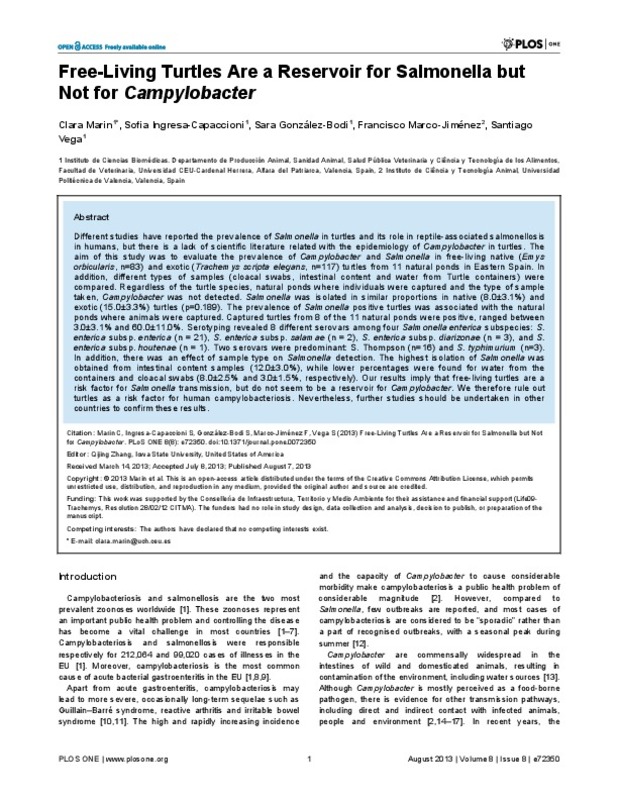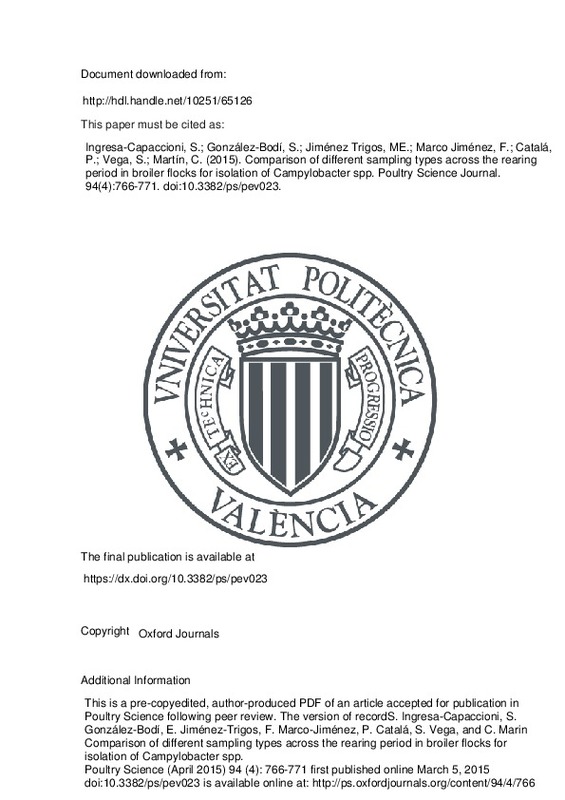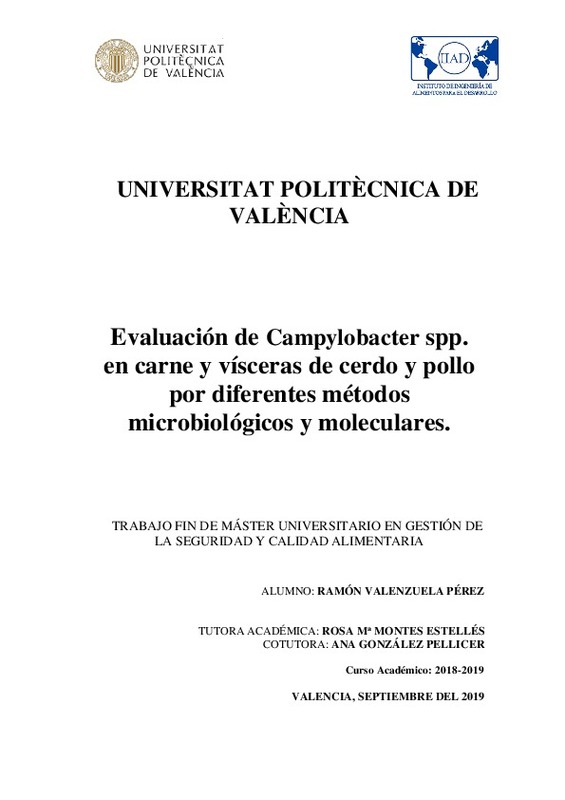Jorgensen, F.; Ellis-Iversen, J.; Rushton, S.; Bull, SA.; Harris, SA.; Bryan, SJ.; González Pellicer, A.... (2011). Influence of season and geography on Campylobacter jejuni and C. coli subtypes in housed broiler flocks reared in Great Briatin. Applied and Environmental Microbiology. 77(11):3741-3748. https://doi.org/10.1128/AEM.02444-10
Por favor, use este identificador para citar o enlazar este ítem: http://hdl.handle.net/10251/33207
|
Título:
|
Influence of season and geography on Campylobacter jejuni and C. coli subtypes in housed broiler flocks reared in Great Briatin
|
|
Autor:
|
Jorgensen, F.
Ellis-Iversen, J.
Rushton, S.
Bull, S. A.
Harris, S. A.
Bryan, S. J.

 González Pellicer, Ana
Humphrey, T. J.
González Pellicer, Ana
Humphrey, T. J.
|
|
Entidad UPV:
|
Universitat Politècnica de València. Departamento de Biotecnología - Departament de Biotecnologia
|
|
Fecha difusión:
|
|
|
Resumen:
|
[EN] Geographical and seasonal variation in the incidence and prevalence of Campylobacter jejuni and C. coli in housed broiler flocks reared in Great Britain in 2004 to 2006 was investigated in this study. Ceca (30) from ...[+]
[EN] Geographical and seasonal variation in the incidence and prevalence of Campylobacter jejuni and C. coli in housed broiler flocks reared in Great Britain in 2004 to 2006 was investigated in this study. Ceca (30) from 797 flocks, not subject to prior partial depopulation and reared on 211 farms, were examined individually for the presence of Campylobacter spp. The best-fitting climatic factors explained approximately 46% of the prevalence of Campylobacter-colonized flocks at slaughter and consisted of a combination of temperature at slaughter, number of sunshine hours in placement month, and millimeters of rainfall in placement month. Positive flocks were more likely to be slaughtered between June and November than during the rest of the year and to be reared in northern Great Britain than in central or southern Great Britain. C. jejuni was identified in approximately 90% of flocks, and C. coli was present in 10% of flocks. The most common clonal complexes identified in 226 isolates typed by multilocus sequence typing (MLST) were ST-45, ST-21, ST-574, ST-443, and ST-828. Flocks slaughtered at the same time were more likely to have similar complexes, and ST-45 had a seasonal pattern, with the highest prevalence in June, and was also more likely to be present in flocks reared in northern Great Britain. © 2011, American Society for Microbiology.
[-]
|
|
Palabras clave:
|
Broiler flocks
,
Campylobacter jejuni
,
Campylobacter spp
,
Climatic factors
,
Clonal complex
,
Great Britain
,
Multilocus sequence typing
,
Seasonal patterns
,
Seasonal variation
,
Sunshine Hour
,
Linear transformations
,
Bacterial DNA
,
Bacterial disease
,
Bacterium
,
Colonization
,
Disease prevalence
,
Environmental factor
,
Geographical region
,
Identification method
,
Population structure
,
Poultry
,
Animal
,
Animal disease
,
Article
,
Bacterium identification
,
Campylobacter coli
,
Campylobacteriosis
,
Cecum
,
Chemistry
,
Chicken
,
Classification
,
Genetics
,
Genotype
,
Geography
,
Isolation and purification
,
Microbiology
,
Season
,
United Kingdom
,
Animals
,
Bacterial Typing Techniques
,
Campylobacter Infections
,
Chickens
,
DNA, Bacterial
,
Seasons
,
Campylobacter
|
|
Derechos de uso:
|
Reserva de todos los derechos
|
|
Fuente:
|
Applied and Environmental Microbiology. (issn:
0099-2240
)
|
|
DOI:
|
10.1128/AEM.02444-10
|
|
Editorial:
|
American Society for Microbiology
|
|
Versión del editor:
|
http://dx.doi.org/10.1128/AEM.02444-10
|
|
Código del Proyecto:
|
info:eu-repo/grantAgreement/FSA//B15001/
|
|
Agradecimientos:
|
This work was supported by the UK Food Standards Agency (project code B15001) and by the Health Protection Agency.
|
|
Tipo:
|
Artículo
|












